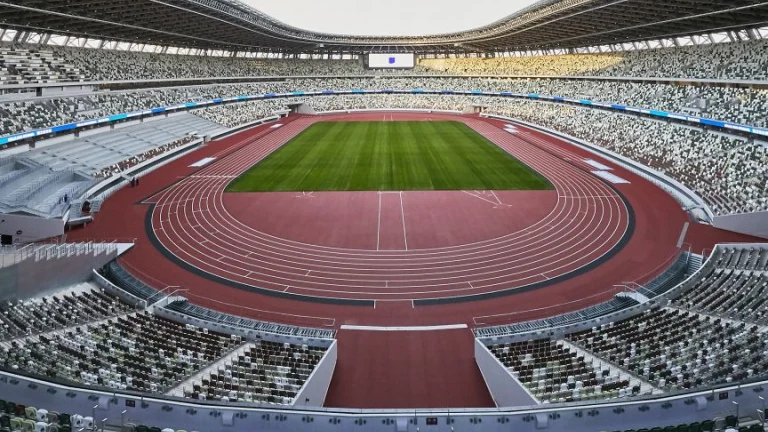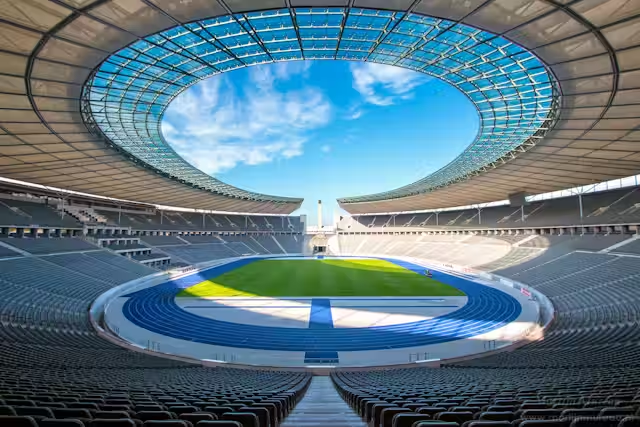Exploring the Olympic Arena: A Symbol of Global Unity and Sporting Excellence

The Olympic Arena stands as a powerful symbol of global unity, athletic achievement, and the human spirit’s unyielding pursuit of excellence. This iconic venue, whether it’s the grand stadiums, aquatic centers, or cycling tracks, represents the heart of the Olympic Games, where athletes from around the world gather to compete at the highest level.
The Significance of the Olympic Arena

The term “Olympic Arena” encapsulates more than just a physical space. It’s a representation of the ideals that the Olympics uphold—friendship, respect, and excellence. The arena is where dreams are realized, records are broken, and history is made. From the opening ceremony, where athletes march under their nation’s flag, to the closing ceremony that celebrates their accomplishments, the Olympic Arena is the stage where the world’s best athletes showcase their talents.
A Journey Through History
The concept of the Olympic Arena dates back to the ancient Olympic Games, held in Olympia, Greece. The ancient stadiums, though rudimentary compared to modern standards, were arenas of fierce competition and religious significance. Fast forward to the modern era, and Olympic Arenas have become architectural marvels, designed to accommodate tens of thousands of spectators and equipped with cutting-edge technology.
The Olympic Arena has evolved over the years, with each host city leaving its unique mark. From the awe-inspiring Bird’s Nest in Beijing to the historic Maracanã Stadium in Rio de Janeiro, these arenas have become landmarks in their own right, embodying the cultural and architectural heritage of their host nations.
The Role of the Olympic Arena in the Games
The Olympic Arena is more than just a venue for sports; it’s a place where the Olympic spirit comes alive. It’s in these arenas that athletes push their limits, inspired by the roar of the crowd and the weight of their nation’s hopes on their shoulders. The design and atmosphere of an Olympic Arena can greatly influence the performance of athletes and the experience of spectators.
Modern Olympic Arenas are designed with sustainability in mind, reflecting the growing importance of environmental responsibility. Many arenas are built with the future in mind, ensuring they serve the community long after the Games have ended. This legacy aspect is a crucial part of the planning process, ensuring that the Olympic Arena continues to inspire future generations.
Memorable Moments in the Olympic Arena
Over the years, the Olympic Arena has witnessed countless unforgettable moments. Who could forget Usain Bolt’s record-breaking sprints, or the emotional victory of the U.S. Women’s Soccer Team in 1999? These moments are etched into the collective memory of sports fans around the world, made even more special by the iconic arenas in which they took place.
The Olympic Arena is also where underdogs triumph, where athletes overcome adversity, and where the world comes together in celebration of human potential. These arenas are the backdrop to stories of courage, determination, and sportsmanship that resonate far beyond the Games themselves.
Conclusion
The Olympic Arena is not just a physical structure; it’s a testament to human achievement and a beacon of hope for what we can accomplish together. As we look forward to future Olympic Games, the Olympic Arena will continue to be the stage where dreams are realized, and history is made. Whether you’re watching from the stands or cheering from home, the Olympic Arena remains a place where the world unites in the spirit of friendly competition and shared ambition.
In the Olympic Arena, the world comes together to celebrate not just the triumph of athletes, but the triumph of the human spirit.

good blog!! keep it up